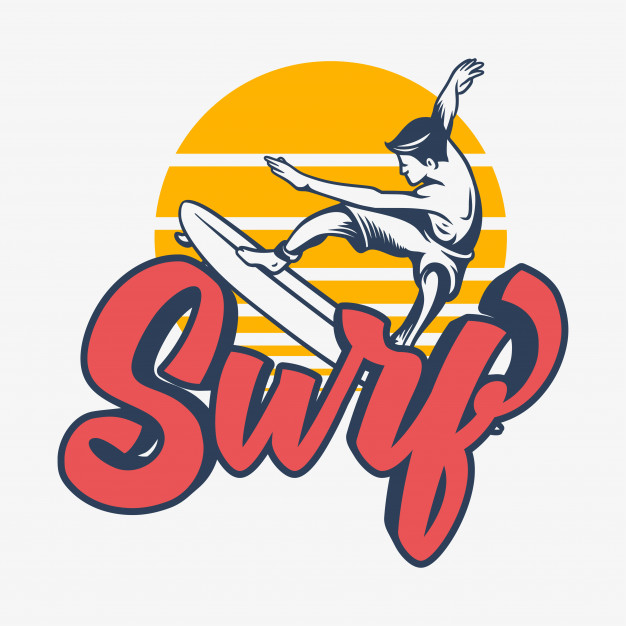
08 March, 2021
· 0 comments
The last week we talked about recommendations when buying your surfboard. Not to sound like a nerd or a technician on the subject, but there are important things that you should know about surfing and its basic tool: The Surfboard. This seems very simply but there are many essential details for good surfing. Calima surf school Lanzarote

1. Nose. This is the front part. It’s arched so you can maneuver it better.
2. Rocker. This is the curvature of the nose. You can see it from a profile view. A more pronounced curve is easier to maneuver but slow, and if it’s flat, it will be faster but more difficult to make any sudden moves.
3. Concaves. They help push you in tight turns.
4. Leash. This is the stretchy plastic cord that keeps your board from running away using a Velcro strap.
5. Leash plug. This is found on the back part. It’s used to attach the leash to the board.
6. Fins. These are the rudders that allow you to steer and remain stable. They are fixed and removable.
7. Tail. This is the back part. It tends to be sharper and slimmer. Here you’ll find the fins. It can be wide for smooth waves, or narrow for tube waves. You’ll glide better if it’s round, but you’ll be able to make stronger maneuvers if it’s square.
8. Rail. Pay attention and you’ll see that rails can vary over the length of the board. Rounded rails help your board stick to the wave better, sharp ones cut the wave and give you more speed, and curves give you better maneuverability.
9. Bottom. This is the bottom part of the board and it tends to be concave to allow water to flow out so you can glide better, this is called the “lift force of the surfboard”. This is a factor that will make you realize the difference between a good board and a bad one.
10. Outline. This is the general shape of the board that you see from below.
Types of Surfboards:
You may have heard of: Rental Surfboards in Famara
1. Funboad stable or Mini Malibu is intermediate and ranges in size from 7 ft to 8’10”. It allows for risky moves.
2. Fish Thruster, polyvalent, 6’2”, good for large and small waves.
3. Morey Doyle. Foam board, ideal for teaching children ages 3 to 5 years.
4. Evolutive. A smaller and more manageable board than the Mini Malibu. Its measurements run between 6’10” and 7’2”. It can also have the length of a gun, but you’ll notice variations in thickness, width and shape.
5. Gun. This is a long and thin Thruster, designed for surfing large tube waves. When you’re an expert and have been surfing for a long time, you’ll use one for sure. You’ll know by then how to deal with the instability it will give you.
6. Thruster This has three fins. Normally you’ll find that boards can have just one fin, or two or even four. The three-fin system offers you better lateral resistance, more radical maneuvering and more traction.
7. Longboard. A classic board. Because of its high buoyancy it’s a good option to practice surfing easily. Also recommended for those beginning as adults or those whose physical condition makes it difficult to control more unstable boards. The main quality of this type of board is that it offers a phenomenal sliding feeling on all waves. With it, you can do some classic longboard moves: Nose riding (walking to the front of the board), Knee turn (bending your back knee), Hang five (letting your toes from one foot hang over the edge), Hang ten (letting your toes from both feet hang over the edge), Turtle roll (grabbing the rails, flip over so that the waves break and pass over you).
8. Becker Kids is a model specially designed for ages 6 to 12 years. It has a rounded point to avoid bumps and injuries.
All boards have measurements so you can identify their use. The longer the board, the less maneuverability; you can walk on it and glide quickly. The thicker it is, the greater resistance, volume and buoyancy you will have.
There are many factors that you must keep in mind when choosing your board, but never forget about the buoyancy, maneuverability and the type of waves that you want to surf.
Comments
Leave a comment
Your e-mail address will not be published. Required fields are marked with *.